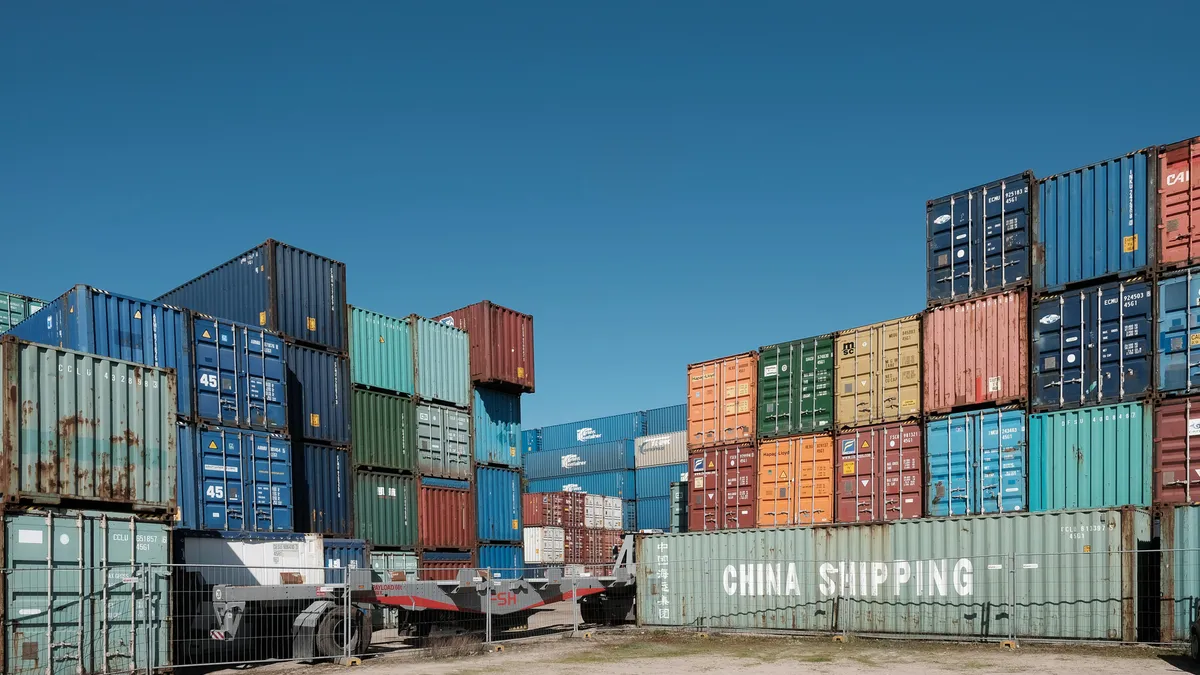In the Daily Digest, the Waste Dive team rounds up insights and moments you may have missed.
WHAT'S NEXT AFTER SOUTHEAST ASIA?
New analysis of U.S. Census Bureau data from Greenpeace's investigative unit Unearthed shows plastic scrap exports from the U.S. to China and Hong Kong dropped by 92% for the first six months of 2018, as compared to the same period last year. Thailand, Malaysia and Vietnam saw the largest increases of inbound plastics as a result.
While this trend was largely known already, and other outlets such as Resource Recycling have also been doing regular analysis of export data, Unearthed gives a useful overview of how it has played out in multiple charts. It also raises the key question of what happened to an estimated 288,000 metric tons of plastic that is no longer being exported but wasn't directly accounted for in other data.
It's hinted that some of that may be ending up in landfills or waste-to-energy facilities. With few states requiring waivers or keeping accurate data on such events, it's hard to know the full extent of this disposal uptick. Now that Thailand, Malaysia and Vietnam have all taken steps over the summer to limit scrap imports themselves, it's possible there could be additional material getting displaced.
Combined with the even larger challenge of what to do with mixed paper — which many recognize won't be solved until more domestic mill capacity comes online — municipalities and service providers around the country are still left to deal with a tough in-between period.
Waste Dive has been tracking these effects down to the state and local level for nearly a year, with regular updates every week. A number of regular trends have emerged during that time and are borne out yet again by our latest batch of news.
Multiple Arkansas municipalities have approved rate increases, and similar discussions are ongoing in New York, Pennsylvania and Texas. Cart inspections and educational campaigns have become common tools to crack down on contamination, as seen this week in Idaho, Massachusetts and Washington. Plus, material continues to pile up at some MRFs — largely mixed paper — as reported from Kentucky as well as in a PBS News Hour story on Massachusetts that aired last night.
IN OTHER NEWS
Sustainable business park takes another step forward in Michigan — Press Release
The Kent County Board of Public Works recently granted approval to the 250-acre Sustainable Business Park concept planned for a site adjacent to the South Kent Landfill. This comes after more than a year of planning — working with consultants such as Gershman Brickner & Bratton — that has sparked a range of innovative ideas about what could come next. Earlier this year, an RFI elicited proposals from 23 different companies. The county's goal is to divert 90% of its waste from landfill by 2030. The South Kent Landfill is currently projected to reach capacity by 2029 and estimates indicate nearly 75% of the material going to it could be reused or recycled.
New York town appears to be deadlocked on Waste Connections agreement — Finger Lakes Times
Days after plans to vote on a proposed $100 million community agreement with Waste Connections in Seneca Falls, New York were pulled from the agenda, it appears town board members are no closer to an agreement. Among the five-member body, two are in favor, one is opposed and the remaining two are expected to take the same stance.
As written, the proposal would allow the company to keep operating its Seneca Meadows Landfill through 2037 in exchange for lucrative annual payments to the town. In return, the town would reverse course on a 2016 law that would require the site to close by 2025. That has since resulted in a lawsuit from the company, which is set to go to trial on Oct. 30. Both sides have a lot at stake in the latest example of increasingly complex community relations around landfills.
Calgary cuts landfill waste nearly in half with curbside organics — Calgary Herald & CTV News
One year after Calgary, Alberta finished delivering curbside organics carts to more than 325,000 eligible single-family households, the Canadian city is reporting a 46% reduction in what's ending up in its black refuse carts. The city has collected an estimated 122,360 tons of organics during that time — about 30% more than projected. Though officials report that contamination, particularly from non-compostable plastic bags, remains a challenge.
The program is currently costing $37 million per year, but the city says without it, the cost to build a new landfill might be as high as $1 billion. Unlike the U.S. where curbside organics programs are still growing in scale, Canada's largest cities have widely adopted the approach. Regina, Saskatchewan, the only city with more than 150,000 people that doesn't have one, recently gave initial approval for a pilot of its own.
TRASH WORLD
Ireland down to a handful of landfills, running out of space — TheJournal.ie
Denis Naughten, Ireland's environment minister, is characterizing the lack of disposal capacity as an emergency situation. The country is down to four landfills and two are taking in the majority of material. There were 127 operational landfills in 2011.
Naughten plans to continue emphasizing a recent focus on organics diversion and will also introduce new policies that target single-use plastics at government buildings. Ireland has a small number of waste-to-energy facilities though they are largely operating at capacity.
Do you have events or webinars that should be on our agenda this week? Email waste.dive.editors@industrydive.com.















